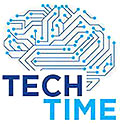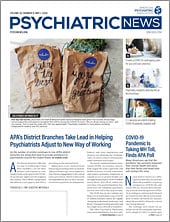As many outpatient psychiatrists across the country find themselves switching to full-time telemedicine during the COVID-19 pandemic, they may want to consider adding another digital tool to their arsenal: mobile health apps.
“Telepsychiatry is a highly feasible and effective mode of care, but it is hard to measure vital signs over video, and some [diagnostic] scales are harder to administer,” said John Torous, M.D., director of digital psychiatry at Beth Israel Deaconess Medical Center in Boston. However, “mobile apps can fill in some of the gaps of a video visit.”
Specifically, health tracking apps that monitor patients’ sleep, physical activity, or mood in between scheduled sessions can provide valuable information for psychiatrists. The key, according to Torous, is to use the data from these apps appropriately.
“These apps can capture data that may be useful proxies for human behavior, but they don’t provide important context,” Torous said. He cited an example of a patient who was using a sleep-tracking app; when Torous first looked at the numbers, it appeared as though the patient was barely sleeping each night. But when he addressed these sleep patterns with his patient, he learned the patient shared his phone with his son, who worked at night.
Torous advised against using mobile app data alone to make treatment decisions. “These tools should be used as a springboard for conversations,” he said. He recommended psychiatrists use the first few minutes of a tele-mental health session to review app-generated data together.
“Ask patients what looks right or wrong; ask them if the data accurately reflect how they have felt in the past week or month,” Torous said. “These brief discussions help patients open up and can strengthen the therapeutic alliance.”
The use of apps can also make patients more self-aware of their behaviors and activities, which encourages them to be more engaged in their treatment, Torous said.
The initial video session with a patient is a good time to discuss mobile apps along with other aspects of how telemedicine may differ from in-person care, Torous noted. For patients who are already engaged in video-based treatment, a good time to introduce an app conversation might be during changes in the treatment plan. “If you are prescribing a new medication, for example, you could suggest that patients start monitoring their movement or sleep to help monitor for side effects.”
Torous highlighted two crucial items to discuss with patients prior to starting an app: the app’s privacy policy (so patients know who is seeing their health data and where the data might end up) and monitoring capabilities/plan (though some apps can continually transmit data to a psychiatrist, the use of a mobile app does not mean the psychiatrist is constantly tracking information).
“[I]t is worth having patients sign a waiver before using an app that captures data to be shared in clinical visits that acknowledges there is no expectation of an immediate response from the psychiatrist,” he said.
As to which of the seemingly countless health-tracking apps are best, Torous noted there is no simple answer. As a general rule, apps developed by government entities are reliable and have good privacy and data-sharing policies, he said. He added that the National Center for Telehealth and Technology (T2)—a component of the Department of Defense—has several apps related to mental health, including the T2 Mood Tracker, which meets most of APA’s mobile app recommendations.
Ideally, psychiatrists should use tools like APA’s mobile app evaluator to review an app’s privacy policy, evidence base, and usability. ■
APA’s mobile app evaluation tool, which includes a short video, is posted
here.
Additional tutorials on evaluating and using apps in practice are posted
here.


